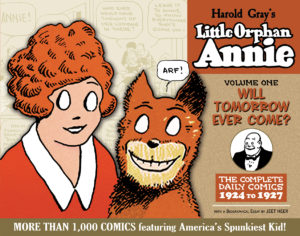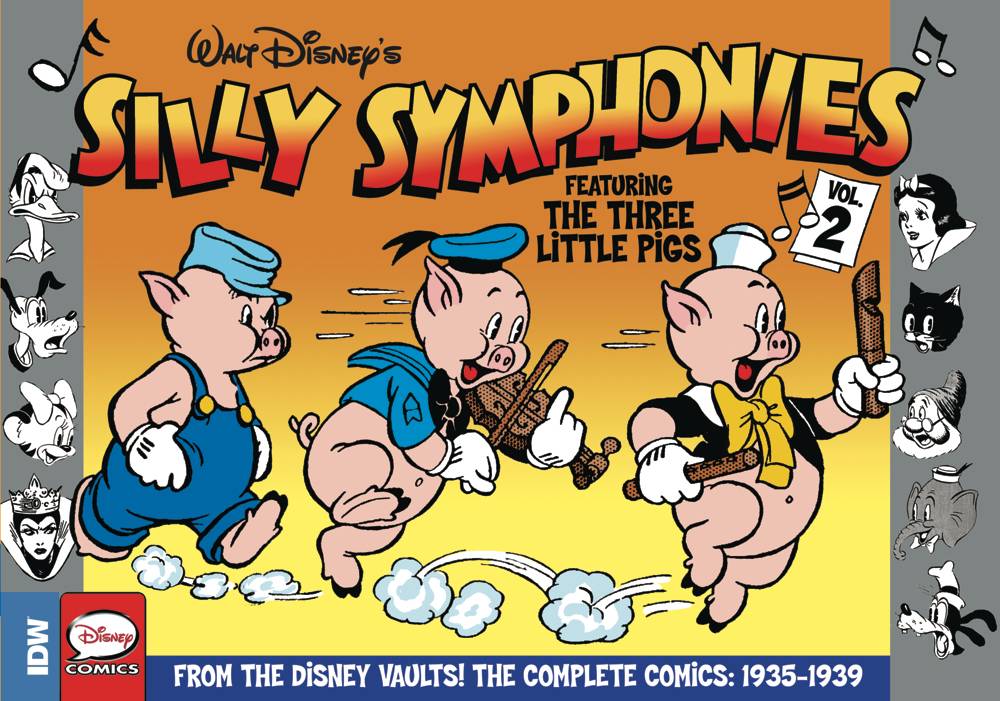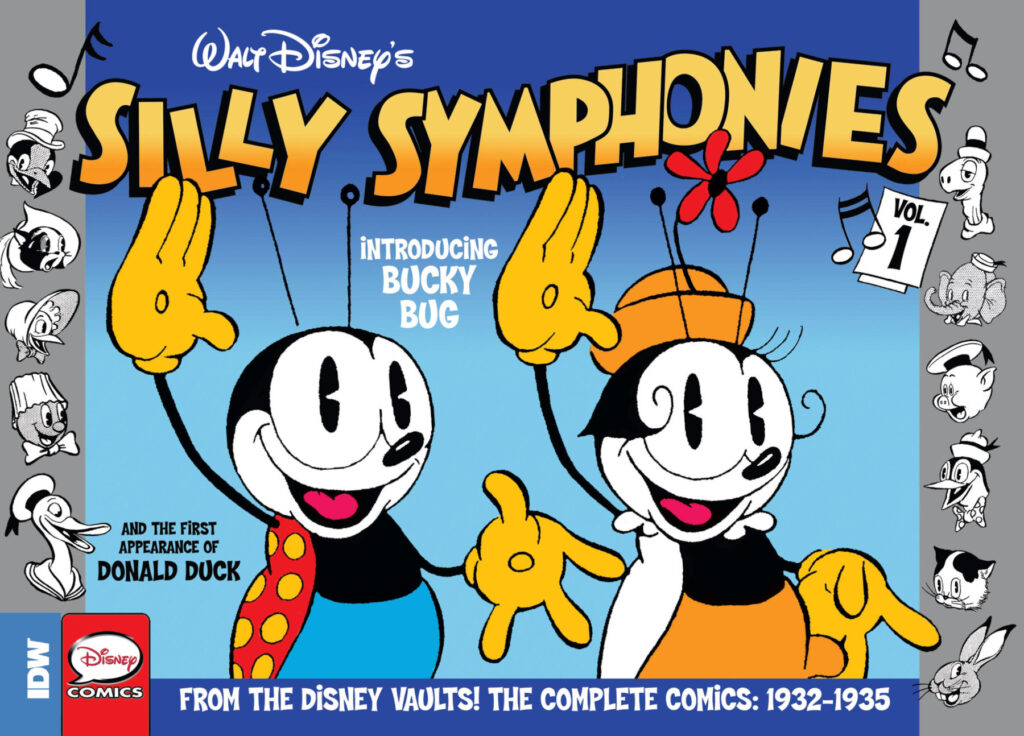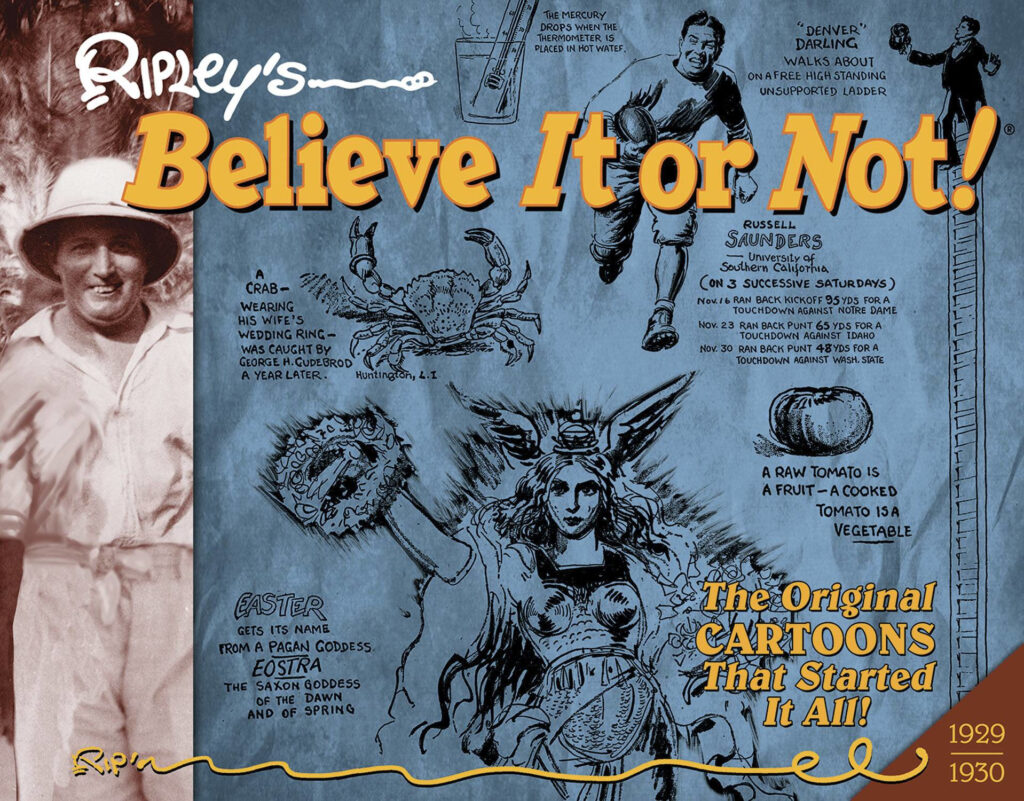The Complete Little Orphan Annie is the second series to be released under IDW’s The Library of American Comics imprint, edited and designed by Dean Mullaney.
Volume One will contain more than 1,000 daily comics in nine complete stories, from the very first strip in August 1924 through October 1927. In the pages of “Will Tomorrow Ever Come?” readers will discover how Annie escapes the orphanage and is ultimately adopted by “Daddy;” how she finds that loveable mutt Sandy and rescues him from being tortured; how she meets the Silos, who become recurring characters throughout the series; how she joins the circus and first encounters Pee Wee the elephant; and how, broke and alone, she hits the road on a succession of dangerous yet spiritually uplifting adventures. This volume also includes an index, and a biographical essay by Jeet Heer.
- Library Of American Comics, June 2008
- 384 pages, 11″ x 8.5″
- ISBN 978-1-60010-140-3
- $39.99 USD
- Order online: Amazon, Indigo
After having this on my shelf for the better part of a decade I finally dove in and experienced a strong first look at Annie and her world of Depression-era America.
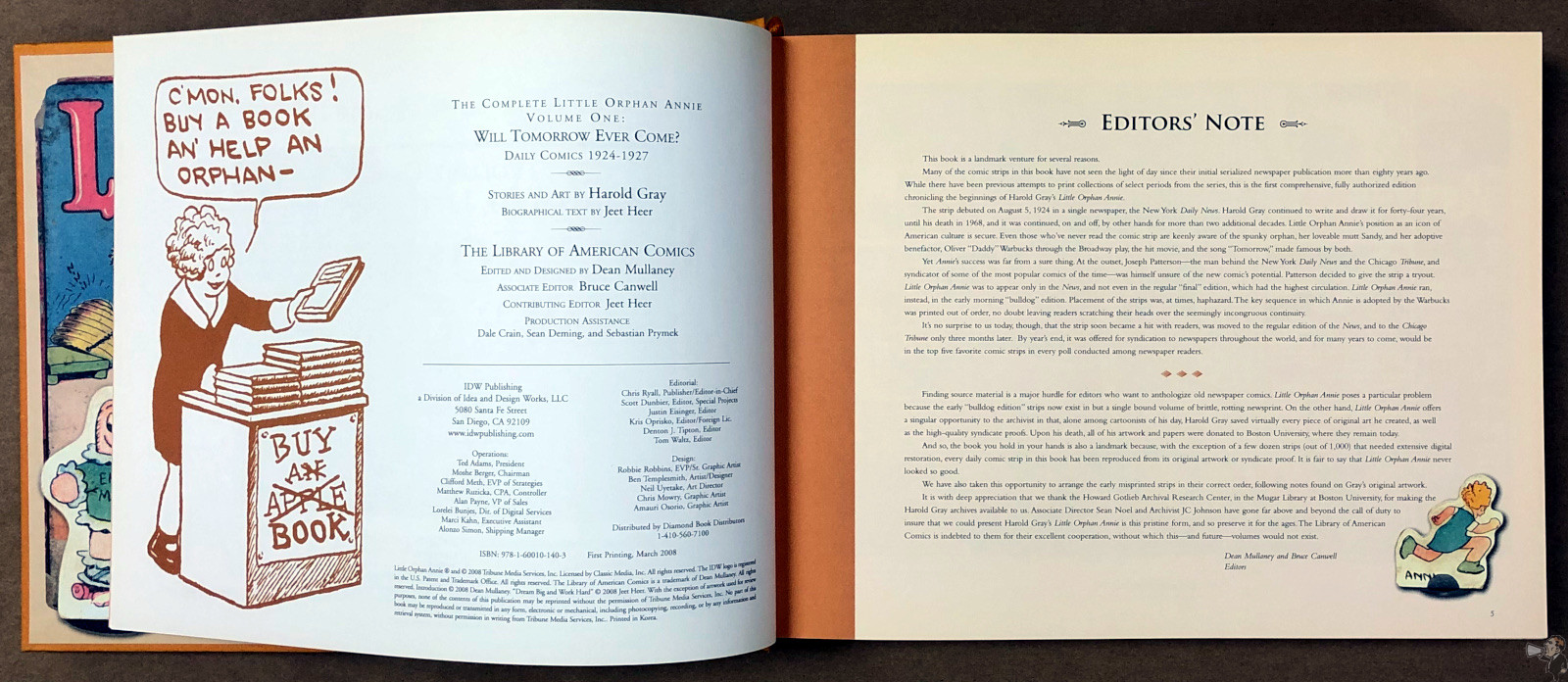


I picked this book up about nine years ago in a shop that dealt in remaindered books; those that are returned from bookstores and are sold at a heavy discount. They normally have a stripe drawn across the top or bottom of the book. I had just started getting into newspaper comic collections via Fantagraphics’ Prince Valiant and picked up about twenty-two volumes of various Library Of American Comics titles for $5 each.
As most of a certain age, my only exposure to Annie was the movie based on the Broadway hit. It was fun when I was a youngster but didn’t inspire me to read the newspaper strips. I can happily report the movie and newspaper strip are very, very different.
Volume ones give us a look at the origins of the characters of the early techniques of their creators. With these strips, I try to keep an open mind and recognize early works are a bit rough, such as my experience with Dick Tracy. None of those worries apply here: Harold Gray is off to a running start with Annie, with a defined style and a common-sense approach to the character and her environment.
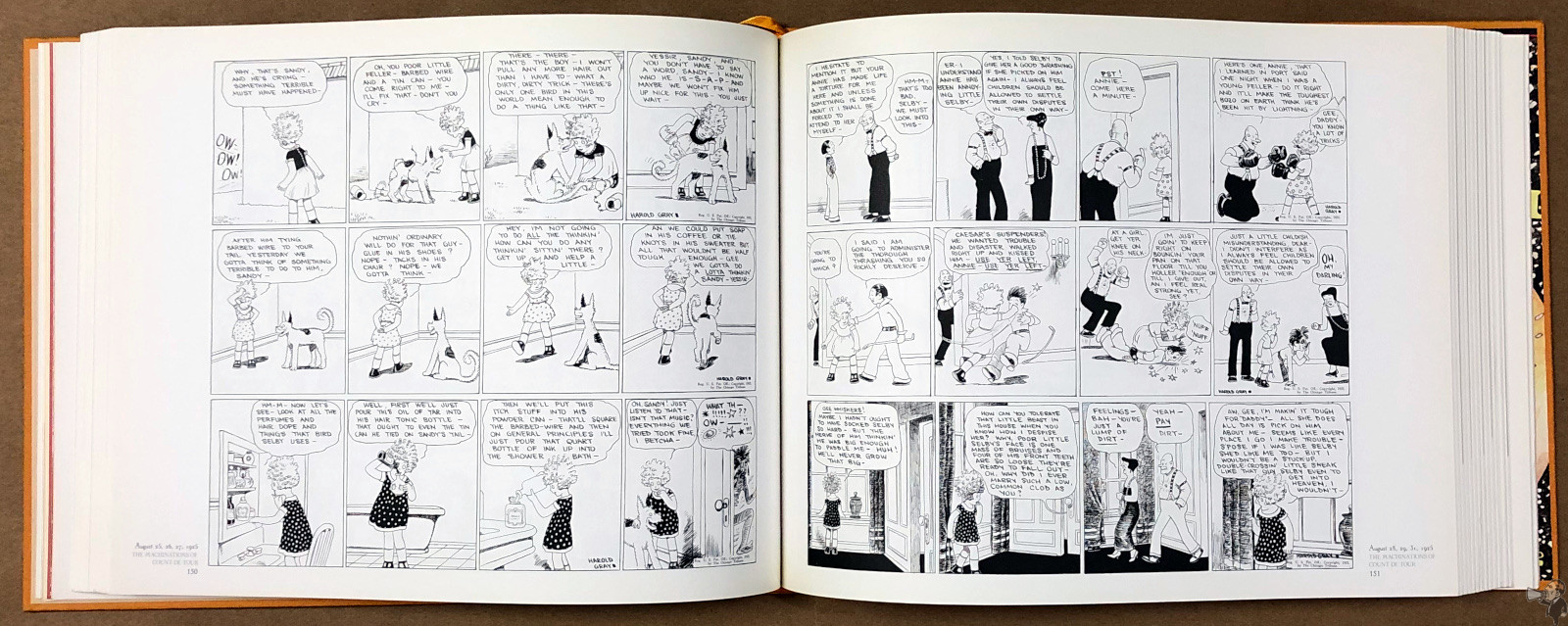
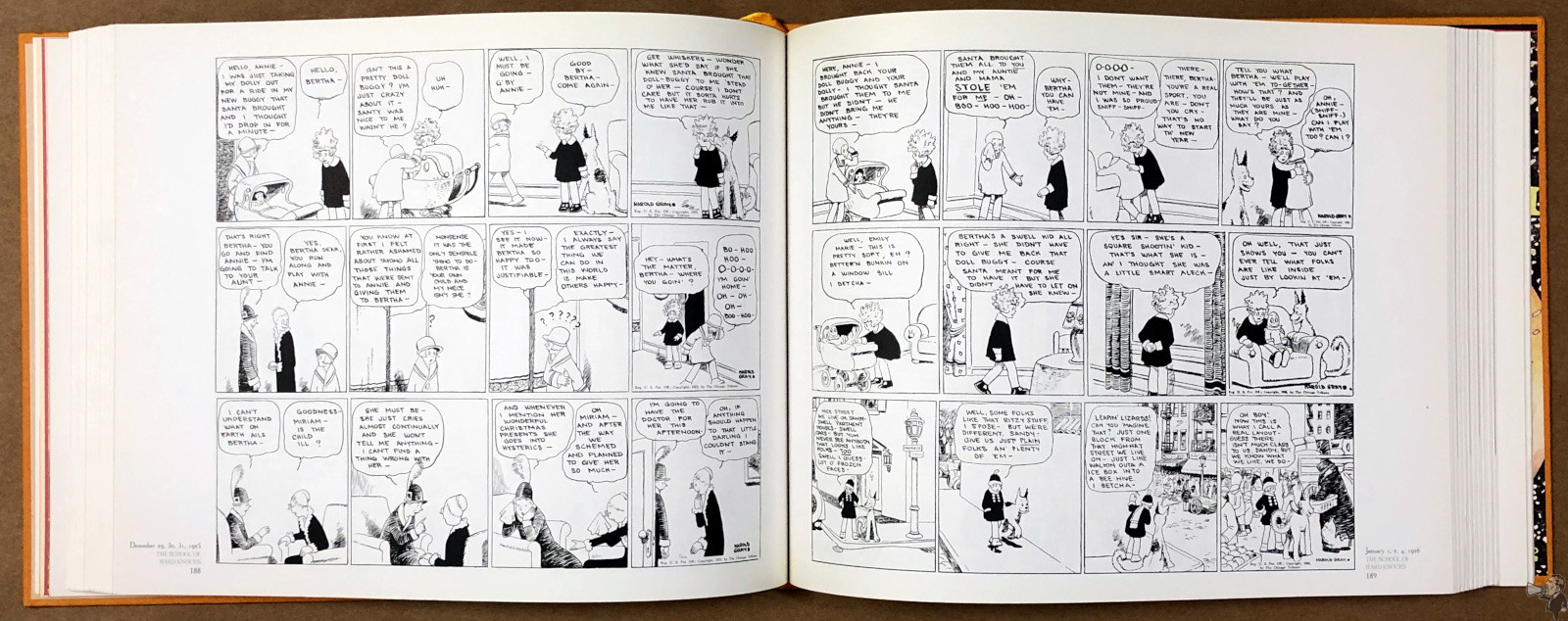
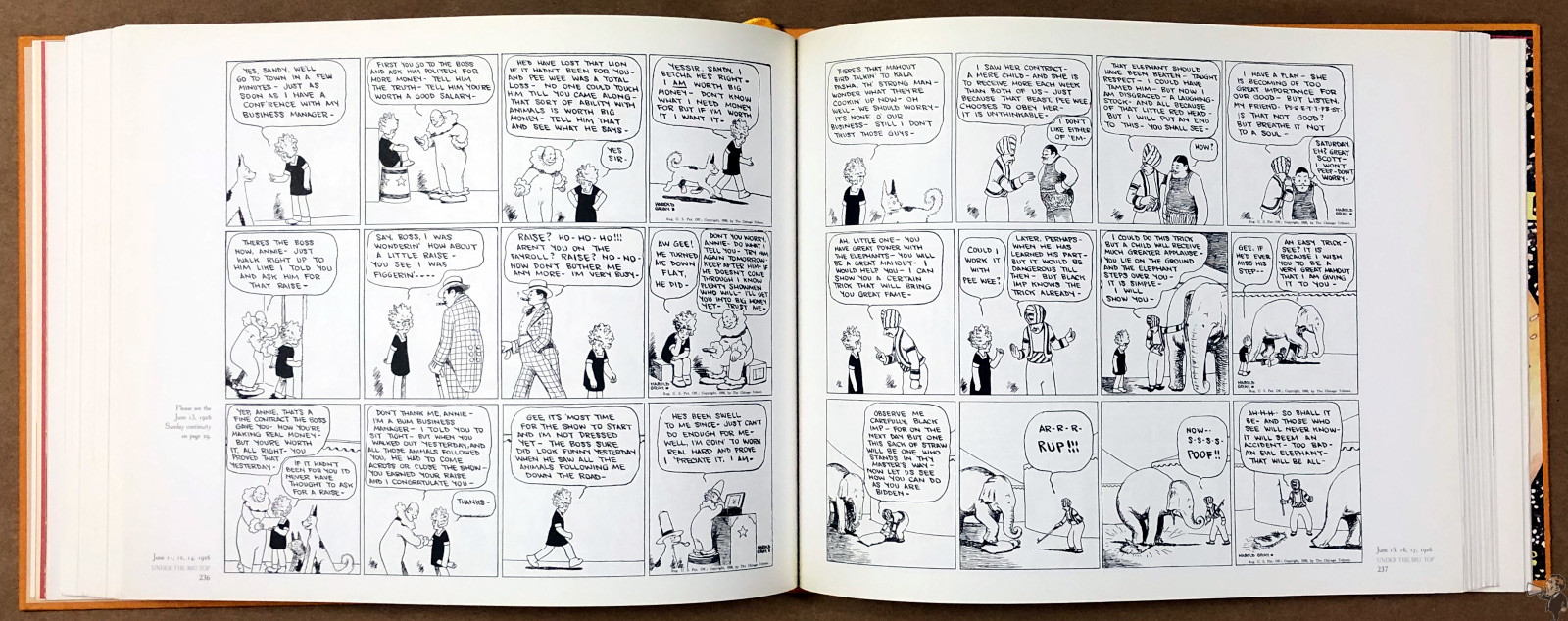
We meet all the main characters here: Annie, “Daddy” Warbucks, Sandy, and Emily Marie. Annie is a straight-shooting optimist who never fails to see the light amidst the dark. It’s an inspiring choice for one who has, for the most part, a hard knock life. Just as we see her make it with one success or another through her hard work ethic, bad luck or misfortune knock her right back down. A reoccurring theme as Annie leaves the orphanage and then goes back, wanders the open road repeatedly, joins the circus but have it fail, and even get kidnapped.
One of the things I enjoy about old newspaper strips is the colloquialisms of the time. Annie has some zingers, which I’ll leave for new readers to discover. A good cartoonist immerses the reader in the zeitgeist and Gray does an excellent job.
Gray’s art style is unique and well defined, right from the get-go. Once you get used to the odd empty eyes the soft edges of the characters, man and animal alike, just work. Poses and positioning in the strip give everything a solid three-dimensional feel. Body language and especially hand gestures give flair to the panels.
At times characters can be hard to differentiate, such as a group of young girls, but Annie’s hairstyle always makes a definitive statement.
As with most books, I read the contents and then read the supplementary material. This time around an excellent introduction by Dean Mullaney setting the strip in a historical context, followed by a lengthy biographical essay by Jeet Heer. For the most part, I’m not particularly interested in the biographical material of creators, but this will appeal to those looking for a well-rounded take on the creator in relation to creation. The book closes with an extensive Index, aimed at the scholarly reader I assume with entries such as Eczema, Luck, and Shaving. Sadly, colloquialism isn’t listed.
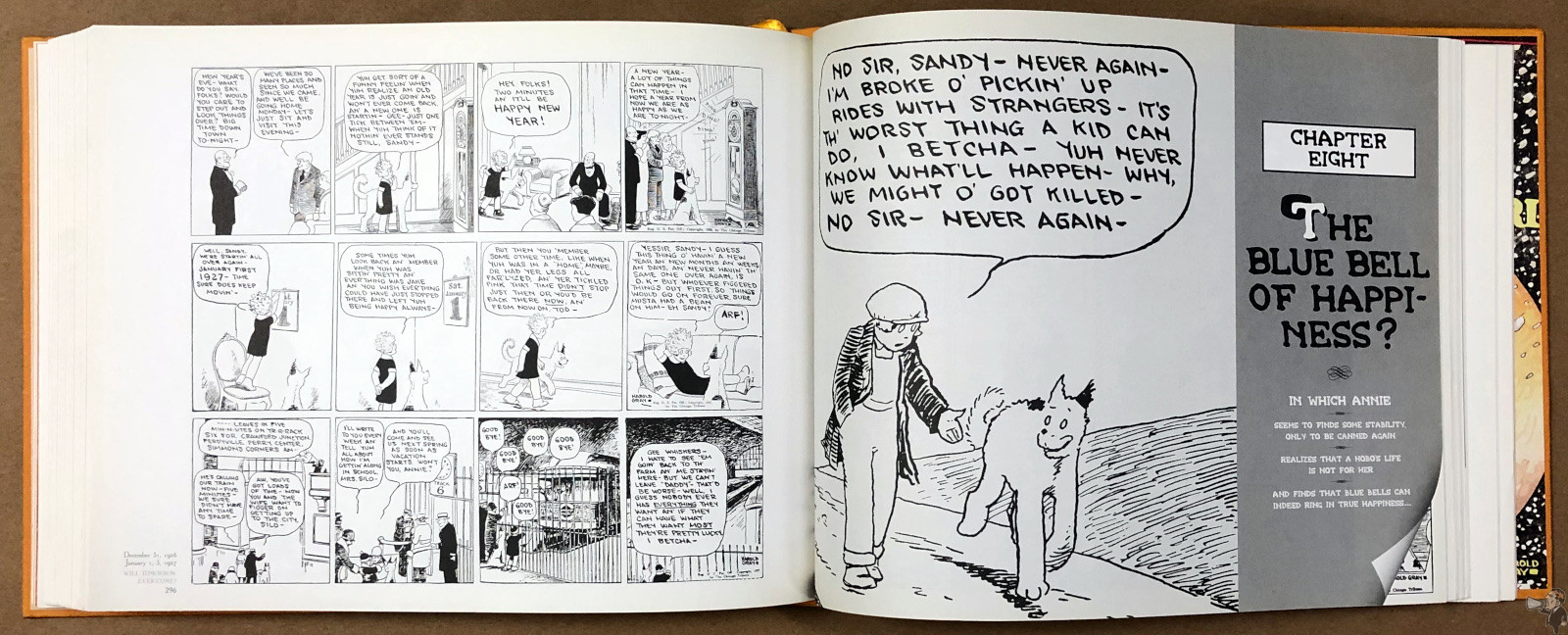
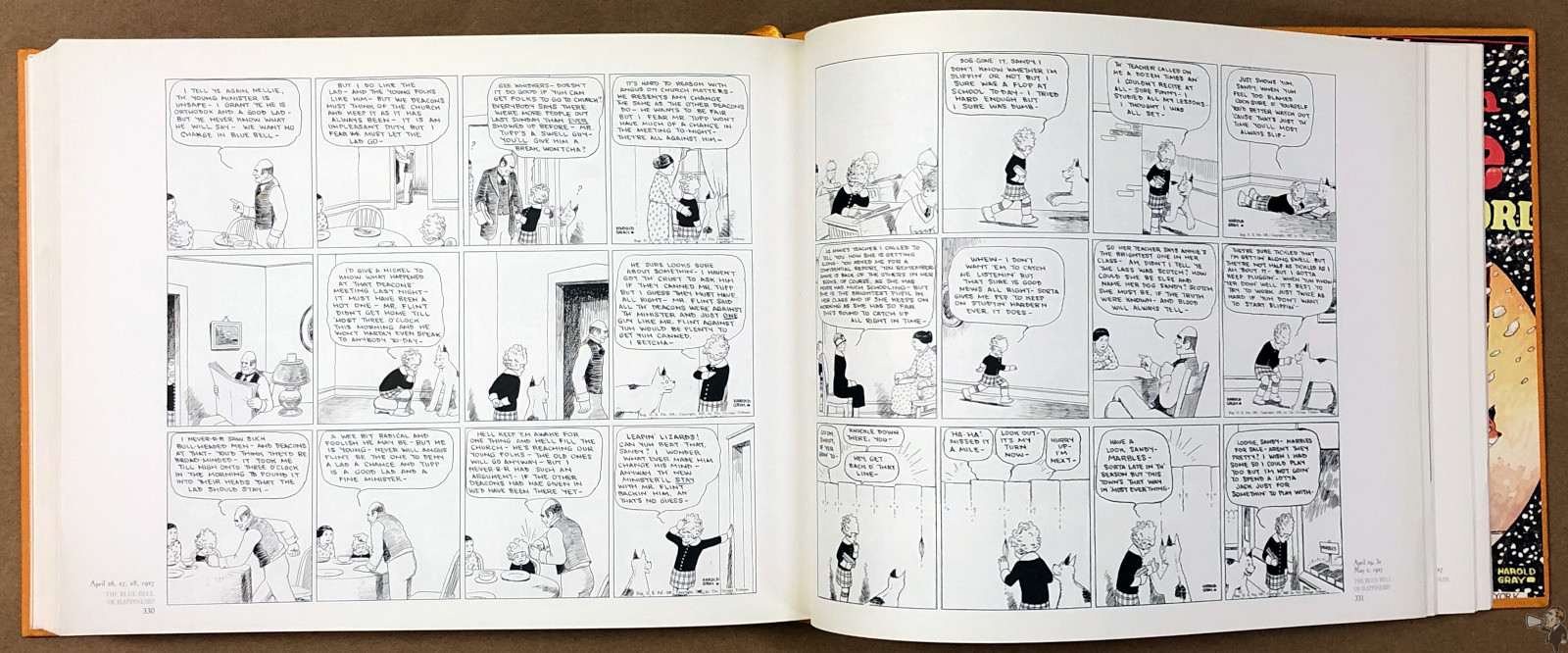

I really enjoyed the design. Colour and images are used well around the black and white body of this work. The chapter dividers make a clear division and provide a visual queue to the next segment, with a plot summary and featured image; the folded lower corner is a great touch.
Production is excellent. Heavy matte paper stock in a sewn binding. Love the silk ribbon. Dust jacket wrapping a yellow cloth hardcover.
Most strips are beautiful, with only the very rare muddied copy. The Editor’s Note discusses Gray’s donation of his original art and production proofs to Boston University. Three daily strips a page make a nice size and a very legible read.
Sundays weren’t part of continuity unless they were, and we are provided with sampling at the front, which should be skipped until you’re prompted to go there in the daily margin notes.
Yes, this volume is readily available from online sources, as are most of the fifteen volumes that have been released.

